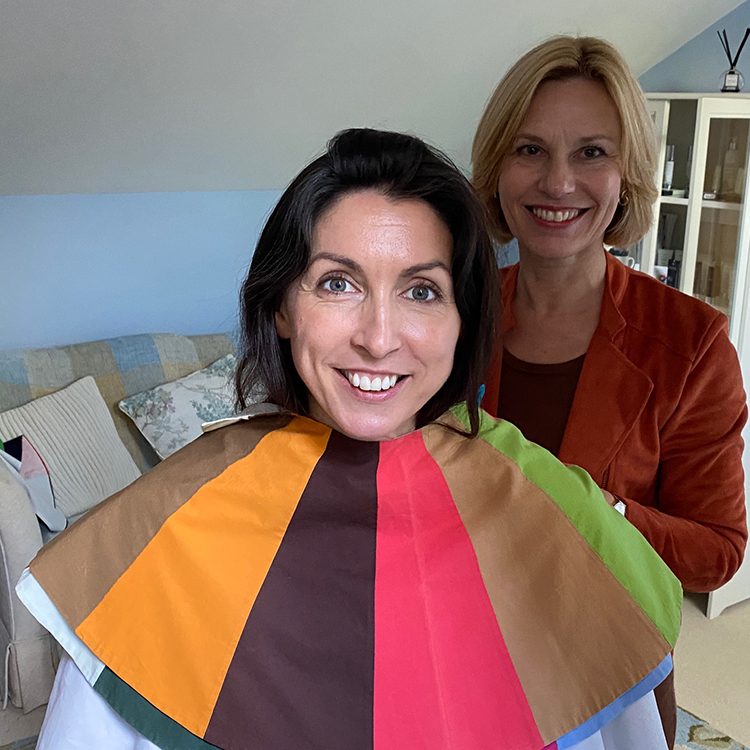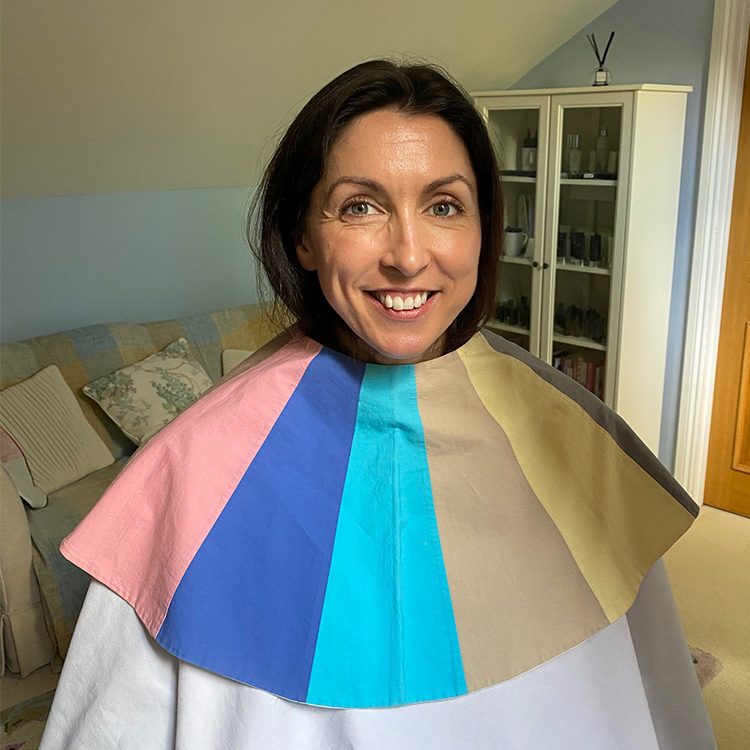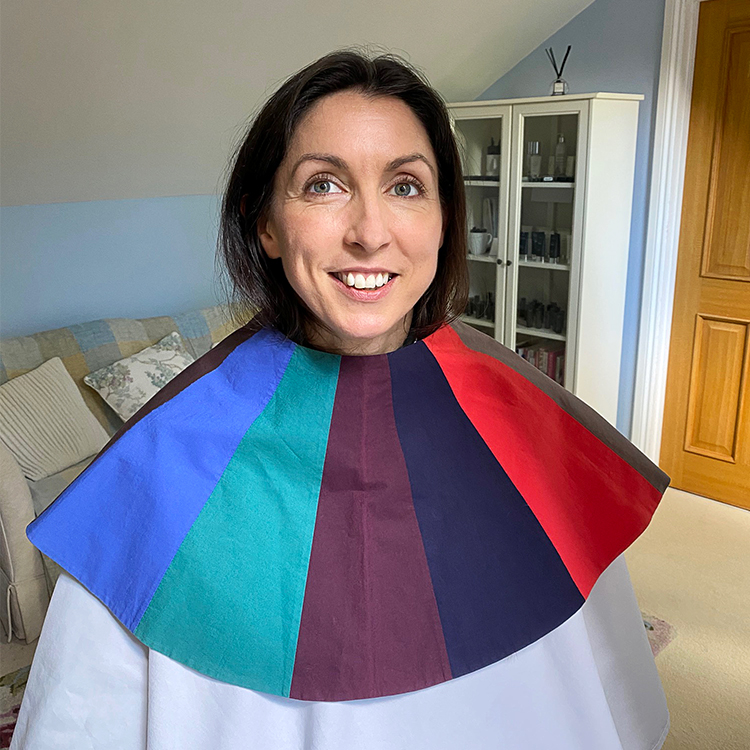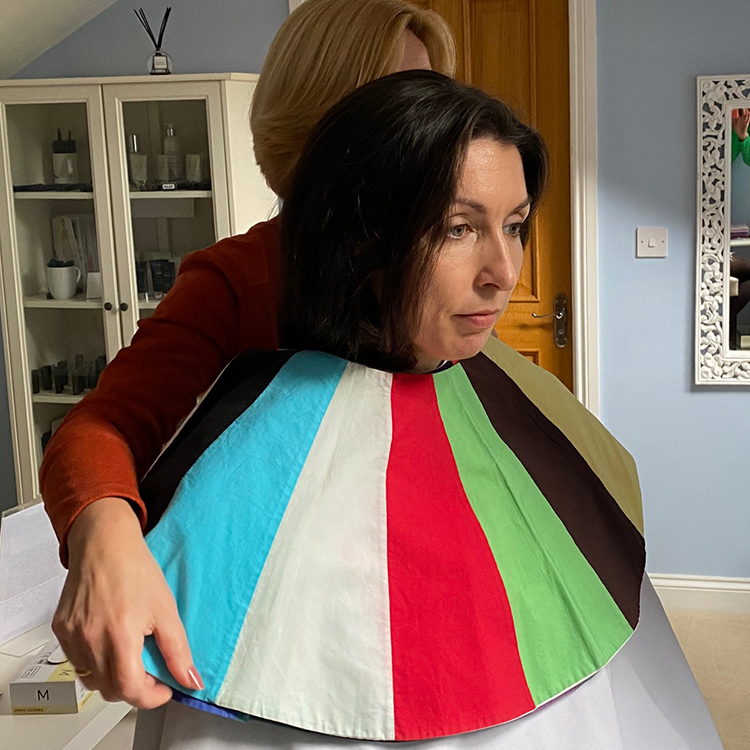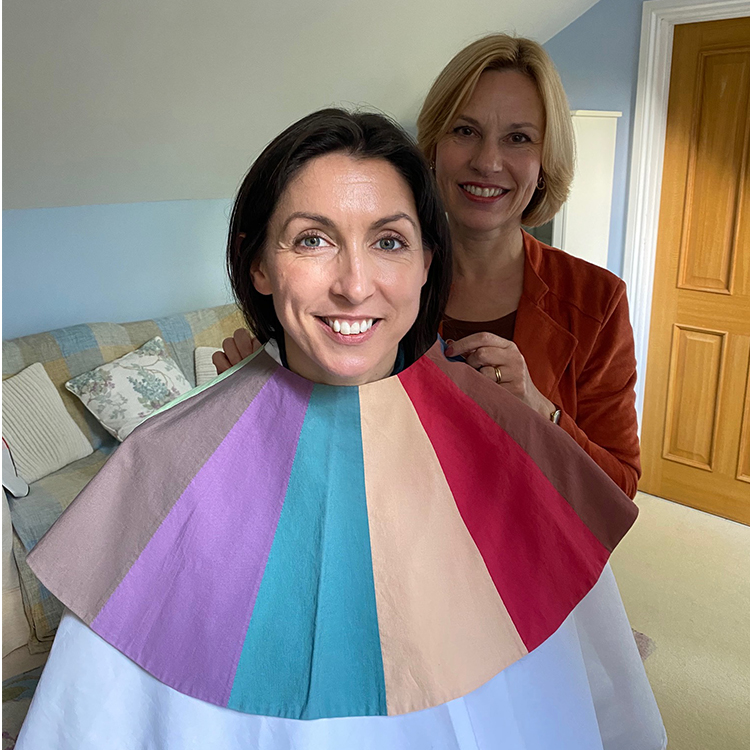Seasonal and Tonal Colour Palettes - Making Sense of it All
Last week, Melissa and I took ourselves off to Hampshire to meet top colour analyst Nicola Davis. Nicola is trained under Colour Me Beautiful's Tonal Directions system, and is one of the most successful consultants using this system.
Longstanding Kettlewell fans will have seen comparisons of the tonal and seasonal systems before (you can read one I wrote recently here), and we have been researching the perfect way of using both systems together to help find your best colours.
Now that we've met with the brilliant Nicola, we understand both systems fully and can help you understand, shop and wear your best colours with even more confidence, regardless of whether and how you've been analysed.
Understanding where you sit on the colour wheel from both a seasonal and tonal perspective, rather than simply the phrase 'I'm a Spring' or 'I'm a Clear, Warm and Light' in isolation, will help you discover even more colours that you can wear, and how you should be combining them to create outfits that wow! And if you've never had a formal colour analysis, read on for how this information will help simplify things for you.
What is tonal analysis?
If you've been analysed under a seasonal system, you might not have come across tonal colour analysis. Without getting too in depth, tonal analysis doesn't describe your colour palette simply as a season, but instead describes its dominant, secondary and tertiary traits (dominant is always listed first, secondary and tertiary are interchangeable and can be listed in either order after the dominant).
The six tonal direction designations are Warm, Cool, Deep, Light, Clear, Soft, so you might, for instance, be classified as Warm, Light, Clear, or Cool, Deep, Soft. While they don't always relate precisely to specific seasonal palettes and seasonal sub-types (the narrower palettes of 'wow' colours within each season, such as the Blue Spring colours or the Soft Summer colours), a translation is possible. And that's where we really feel the magic happens - adding the knowledge of your dominant tonal direction to your seasonal palette is the key which will unlock your best colours, and the best way to combine them. Even if you don't know your seasonal sub-type, we're going to be discussing how to start to consider your dominant tonal direction in the coming weeks and months.
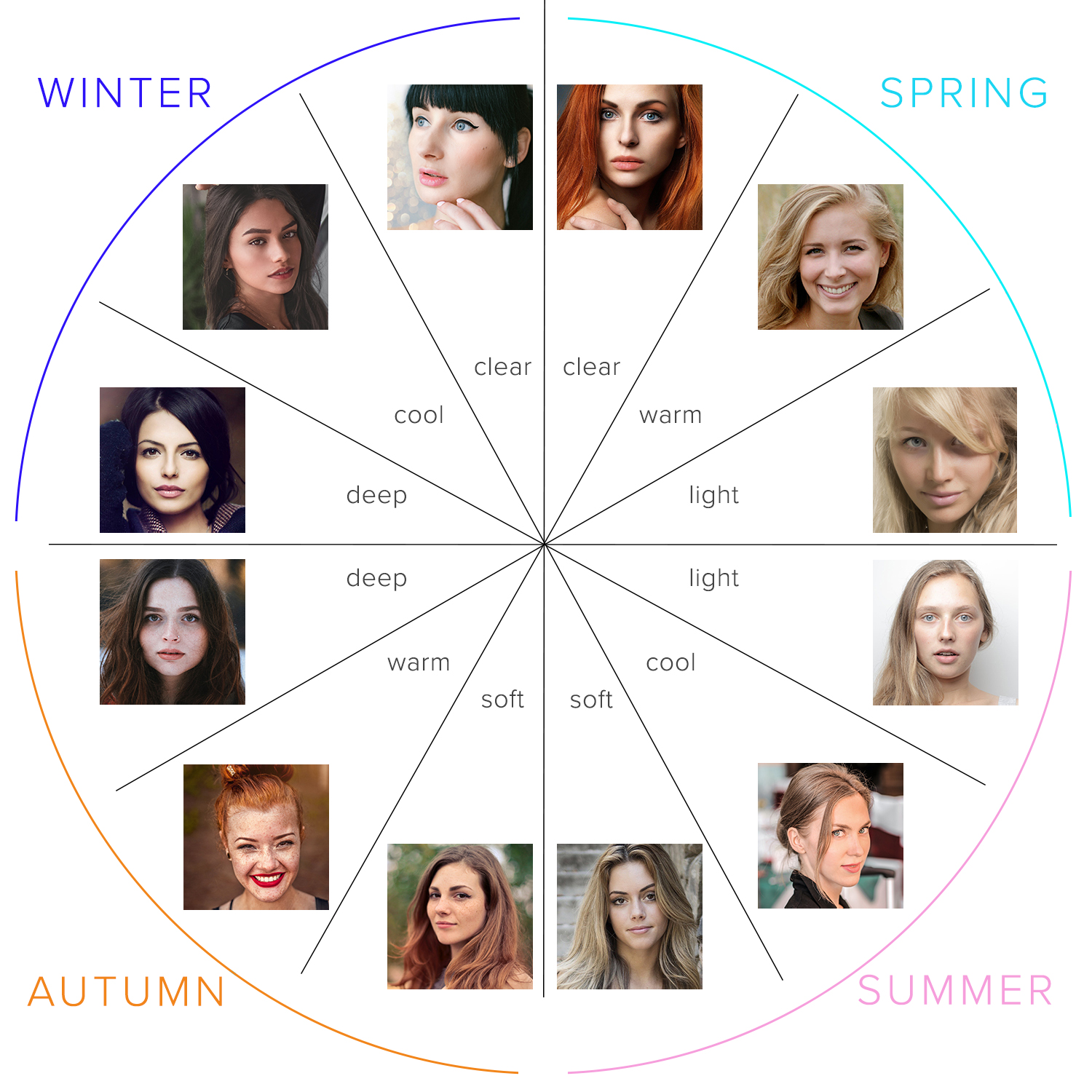
Adding tonal directions to your season
Firstly, don't panic! We'll still be using the four main seasonal palette designations every single time we describe a colour. This means that each and every colour will continue to be coded as either Spring, Summer, Autumn or Winter.
However, we want you to also understand where you sit tonally, in order to fully understand your own personal palette, including those colours which might work for your particular seasonal sub-type but might not work for everyone who shares your season.
As such, we've created a translation guide for you, to help you understand how your seasonal sub-type relates to your dominant tonal direction.
For each of the tonal directions groupings below, I've created a 'translation' into the appropriate seasonal sub-type, so you can see which dominant tonal direction applies to you.
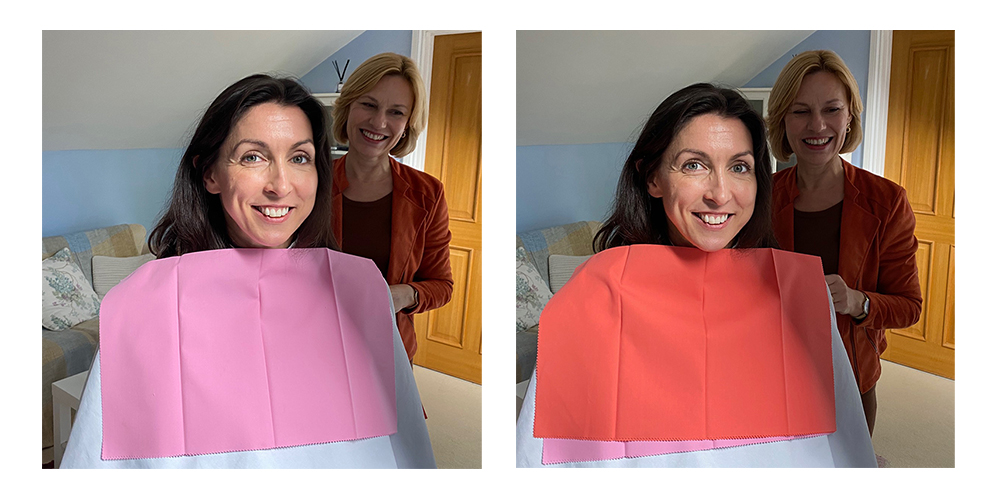
The soft cool pink on the left makes Jo look chalky and washed out, whereas the warm coral pink gives her a healthy warm glow.
Cool
Your dominant colouring is cool with no warmth to it. To achieve harmony and balance, you need to wear colours which have blue or cool undertones and which can be from a light to deep tone. Avoid yellow and golden based colours entirely. You might opt for a more tonal look, or some contrast, but high contrast can be overwhelming for you.
Cool, Soft, Deep = Brown Summer
Cool, Soft, Light = Sweetpea/True Summer
Cool, Light, Clear = Bright Summer, Sprinter Winter
Cool, Deep, Clear = Sultry Winter
Warm
Your dominant colouring is warm and golden. To achieve harmony and balance, you need to wear shades that have a yellow or golden undertone, and avoid all cool tones. Your best colours can be from light to moderate depth. Warm up your navy and greys with, for instance, yellows and corals.
Warm, Clear, Light = Golden/Warm/True Spring
Warm, Clear, Deep = Vibrant Autumn
Warm, Soft, Deep = Leaf/True Autumn
Warm, Soft, Light = Soft Autumn, Light/Pastel Spring
Light
Your dominant colouring is light and delicate. To achieve harmony and balance, you need to use light to medium depth colours. Do not overpower your natural colouring with dark combinations and when you wear the darker colours of your palette, keep the lighter shades near your face.
Light, Warm, Clear = Pastel Spring
Light, Warm, Soft = Pastel/Light Spring, Soft/Light Blue Autumn
Light, Cool, Soft = Pastel/Light Summer
Light, Cool, Clear = Sprinter Winter, Bright Summer
Deep
Your dominant colouring is deep and intense. To achieve harmony and balance, you need to wear somewhat darker colours together, tonally or in contrast. Avoid wearing pastel shades on their own.
Deep, Warm, Clear = Deep/Dark/Blue Autumn (suits more contrast) - this is me!
Deep, Warm, Soft = Deep/Dark/Blue Autumn (suits more tonal)
Deep, Cool, Clear = Deep/Dark/Burnished Winter
Deep, Cool, Soft = Deep/Dark Summer
Clear
Your dominant look is clear and contrasting. To achieve harmony and balance, you need to wear colours of contrasting depths, or neutrals with brights. Avoid blended or a tone-on-tone look (i.e. two light or two dark colours together).
Clear, Warm, Light = Bright/Blue Spring
Clear, Warm, Deep = Paintbox Spring/Vibrant Autumn
Clear/Cool, Light = Bright/Sprinter Winter
Clear, Cool, Deep = Jewel Winter
Soft
Your dominant look is soft and muted. To achieve harmony and balance, you can wear tone-on-tone shades from the same colour group. Darker colours from your palette can be worn with shades that are one or two tones lighter. Use contrast with care and avoid vibrant colours.
Soft, Warm, Light = Soft/Light Blue Autumn, Pastel/Light Spring
Soft, Warm, Deep = Leaf/True Autumn
Soft, Cool, Light = Sweetpea/True Summer
Soft, Cool, Deep = Soft/Brown Summer
This more universal language will help set the scene when we're talking about seasonal palettes and sub-types/specific colour combinations within those seasonal palettes.
How does this help me if I've been analysed seasonally?
They joy of combining your season with your dominant tonal direction is that it gives you more of your best colours than simply looking at your seasonal palette.
For instance, if you're a Burnished/Deep Winter, there will be lots of Deep colours which will work for you but that we can't in good conscience code as a definite 'Winter' colour. So knowing your tonal direction means that you can browse both 'Winter' and 'Deep' colours to find colours you love, and which will work for your unique skintone and colouring, rather than simply looking at the colours which will suit all Winters but don't take into account where you sit within the Winter palette.
We're going to be talking a lot more about these crossover/tonal direction colours and palettes in the coming months and really helping you get to grips with using your dominant tonal direction to support your seasonal analysis.
How does this help me if I've been analysed tonally?
The same, but in reverse! If you've been analysed as Cool, Soft and Light, for instance, you've probably browsed the dominant 'Cool' palette, perhaps Soft and Light too, but possibly found too many colours or been unsure how they will pair together. Using the season related to your palette as well (in this case, Summer) will give you a sense of how to put your colours together, and help you search for inspiration on our seasonally coded website.
How does this help me if I've NEVER been analysed, or I don't know my seasonal sub-type?
This is where our real love of tonal directions comes in - if you've never been analysed, it can be an awful lot easier to figure out your dominant tonal direction than it is to figure out your seasonal palette. We're going to be talking more about this in the coming weeks, but for now, take a look in the mirror. What's the first thing you see? Dark eyes, tanned skin and dark hair? You're probably a Deep. Mid tone 'is it blonde, is it brown?' hair, soft eye colour and medium skin? You might well be a Soft.
Don't panic if you can't see this quite yet - we promise more tips and tricks in the future! Our seasonal palette quiz should be enough to get you started for now.
Now you can head to Shop by Colour in the navigation bar to find YOUR colours - enjoy!







